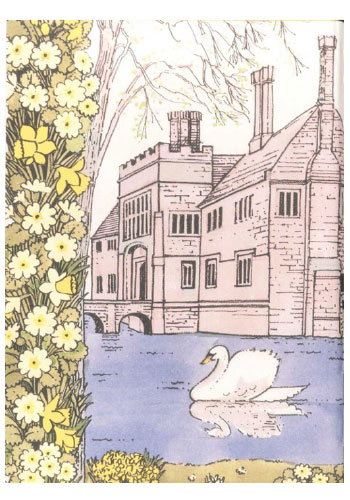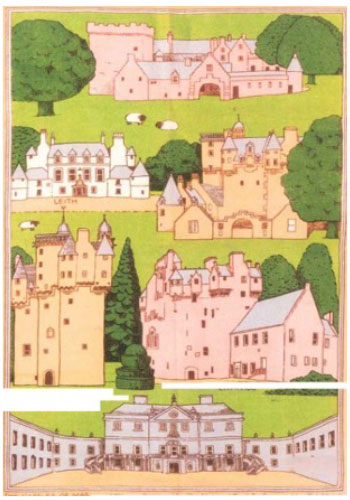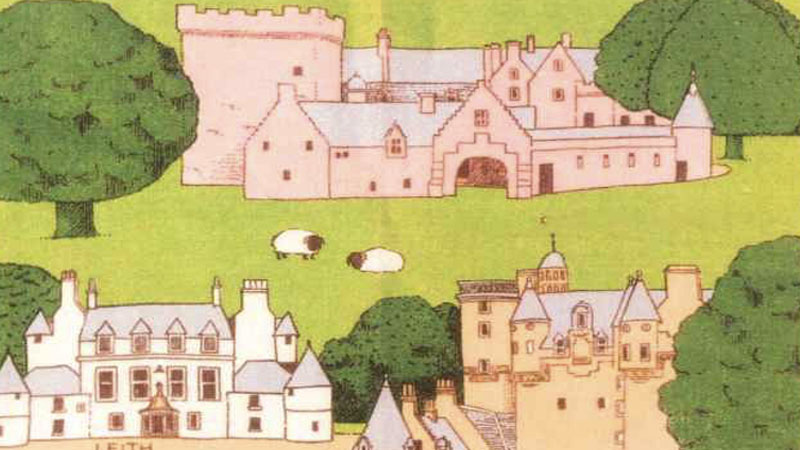Tea towels are ephemeral, even throwaway. Their most everyday of purposes might seem to rob them of any potential dignity. Frayed and holey, hanging on the rail of the Aga or revisited in a pile of ironing, the faded garden of Sissinghurst or ghostly view of Bodiam Castle reappears in ever diminishing focus. But that very quotidian character also makes them familiar – significant even – and most importantly, worthy of the profoundly serious way that their decoration was conceived.
Perhaps the strength of these images comes from this contrast; on one hand, Pats heritage as the child of immigrants from Central Europe, land of peasant art and of simple repeating patterns in bold colors and on the other, the many-stranded inheritance of the National Trust, whose custodianship of two great pillars of British culture – the country house and the man-made landscape – represents the very opposite: a complex synergy of high cultural influences.
In the end, though these are just the tea towels. Members of the National Trust and visitors to the places it cares for have loved them as much as their creator. Decorative design is at its very best when the designer actually speaks directly to the eventual customer, the consumer, the audience. Pat spoke with a clear voice, stripped of the accents of Mittel Europe or Hull, it was a voice that suited the Trust and that, in a small and specific field, represented all that was best and most remarkable about it.
COTTAGES, CASTLES & COUNTRY HOUSES
Visiting a country house is the definitive National Trust experience. In the game of mansion monopoly, the Trust estate is unbeatable. It stretches from the muscular Norman castles, by way of the medieval charm of Ightham Mote, the soft Tudor refinement of Charlecote and Oxburgh and the prodigy houses of the Elizabethan magnates to the superstars of the eighteenth century – Kedleston, Ickworth and Wimpole.

Pat had a reticence about tackling unadulterated classical architecture and turned plaintively to her husband Peter for help. He was firm, as ever confident of her resilience and abilities, and admonished her to dig deeper.

The colour-washed harling of Scottish castles particularly appealed to Pat and suited her use of flat color. The grey of the stone roof is used for the unrendered Haddo House in Aberdeenshire.


